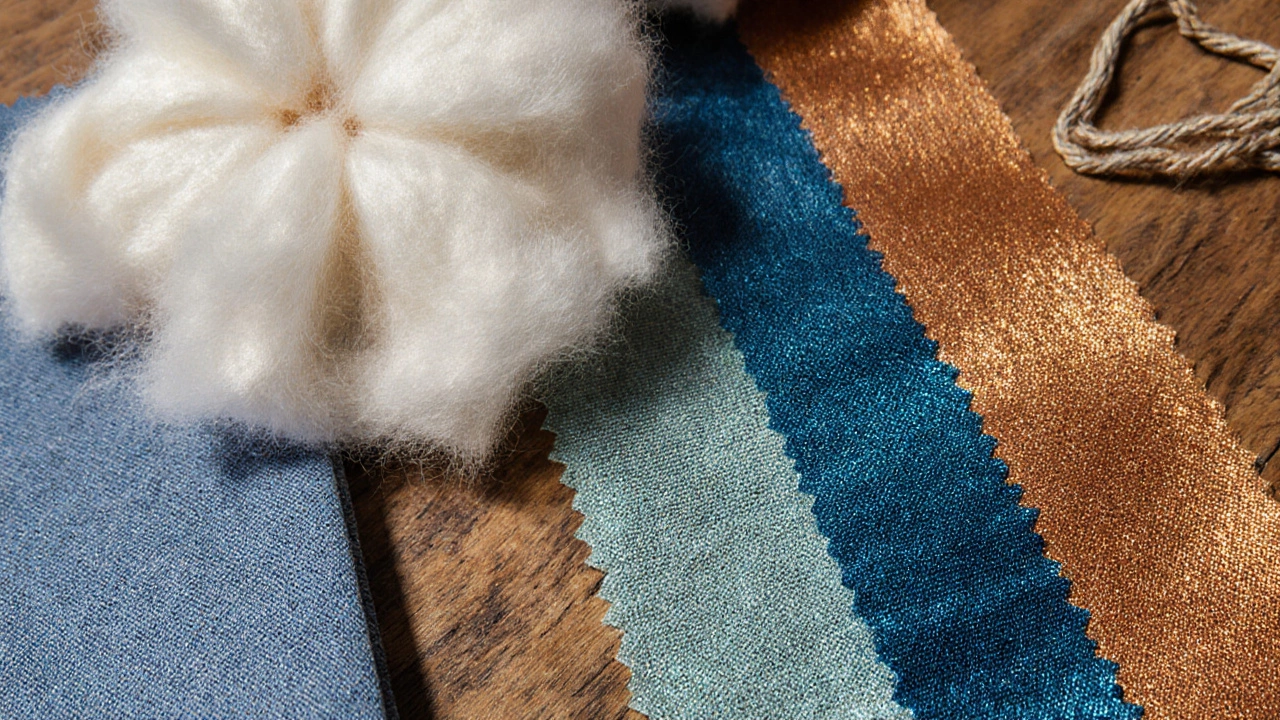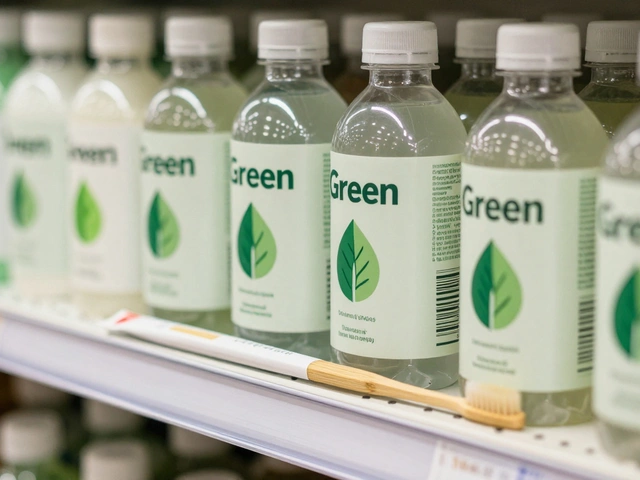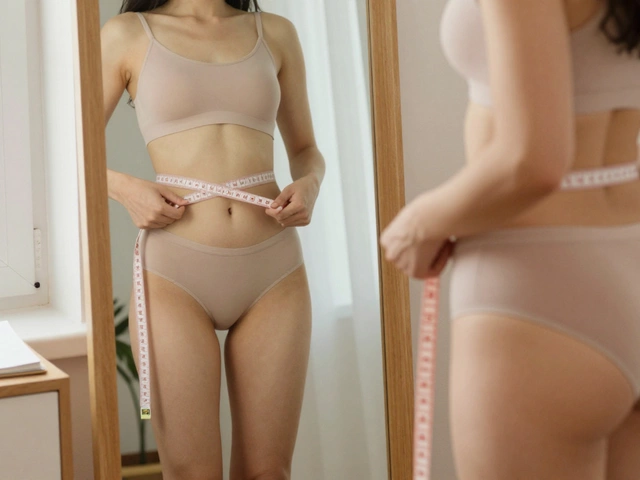Ever walked past a rack of clothes and wondered if any of them were actually good for the planet? The truth is, the fashion world is shifting, and sustainable fashion is becoming the new norm-not a niche trend. Below you’ll find a clear picture of what sustainable fashion really looks like, how to spot it, and why it matters.
What is sustainable fashion?
Sustainable fashion is a design, production, and consumption approach that minimizes environmental impact, respects human rights, and promotes long‑term viability of the clothing industry. It’s not just about using organic fabrics; it’s a whole ecosystem that includes everything from raw material sourcing to end‑of‑life recycling.
Core principles that define it
- Reduce waste at every stage of the product life‑cycle.
- Choose renewable or recycled resources.
- Ensure fair wages and safe working conditions.
- Design for durability, repairability, and recyclability.
- Maintain transparency throughout the supply chain.
Materials that embody sustainability
Materials are the most visible sign of a brand’s commitment. Here are the ones that consistently pass the green test.
- Organic cotton is grown without synthetic pesticides or fertilizers, using 91% less water than conventional cotton. Look for certifications such as GOTS.
- Recycled polyester is made from post‑consumer plastic bottles, cutting raw‑oil demand by up to 60%. Brands that use it often cite the Global Recycled Standard.
- Closed‑loop production is a system where waste fibers are continuously re‑spun into new garments, creating a circular loop. Companies like Patagonia and Eileen Fisher lead the way.
- Zero‑waste pattern cutting is a design technique that arranges pattern pieces to leave no fabric scraps. It reduces landfill waste by up to 30%.
- Eco‑friendly dyes are derived from natural sources such as plants, minerals, or low‑impact synthetic processes that avoid heavy metal runoff. Look for certifications like Oeko‑Tex.

Production practices that matter
Even the best material can be undermined by harmful factories. Ethical production focuses on two pillars: labor rights and environmental stewardship.
Fair trade is a certification ensuring workers receive a living wage and work in safe conditions. Brands that feature Fair Trade labels typically audit their factories annually.
Beyond wages, many manufacturers now audit their carbon footprint is the total greenhouse‑gas emissions produced throughout the garment’s life‑cycle, measured in CO₂‑equivalent. By switching to renewable energy and optimizing logistics, they can cut emissions by 30% or more.
Business models driving the change
Traditional retail isn’t the only way to wear clothes. Innovative models make sustainability a lifestyle choice.
- Secondhand market is a thriving ecosystem of thrift stores, consignment shops, and online resale platforms that extend garment lifespans. Items sold secondhand can avoid up to 20 kg CO₂ per piece.
- Rental fashion is a service letting consumers borrow outfits for a limited period, reducing the need for ownership. Rental companies often use durable fabrics to withstand multiple wears.
- Upcycling programs turn old garments into fresh designs, keeping fibers in use and sparking creativity.
Measuring impact: tools and certifications
Transparency starts with data. The most reliable ways to verify a brand’s claims include:
| Metric | What It Shows | Typical Benchmark |
|---|---|---|
| Carbon footprint | CO₂‑equivalent emissions per item | <10 kg CO₂ for basics |
| Water usage | Liters of water consumed in production | <200 L for organic cotton tees |
| Waste diverted | Percent of material recycled or reused | ≥80 % for closed‑loop lines |
| Fair‑trade compliance | Worker wages and safety standards met | 100 % for certified factories |
Many brands publish a life cycle assessment (LCA) is a comprehensive analysis measuring environmental impacts from raw material extraction to end‑of‑life disposal. An LCA helps consumers compare items beyond the headline claim.

How to spot truly sustainable pieces
When you’re in a store or scrolling online, keep this quick checklist in mind:
- Check material labels: look for organic, recycled, or regenerated fibers.
- Search for third‑party certifications: GOTS, Fair Trade, OEKO‑Tex, Global Recycled Standard.
- Read the brand’s transparency report: do they disclose supply‑chain partners and carbon data?
- Ask about durability: can the garment be repaired or easily recycled?
- Consider the business model: does the brand offer take‑back, resale, or rental services?
Common pitfalls and greenwashing
Not every “eco” claim holds water. Watch out for vague buzzwords like “green” or “natural” without proof. Brands may market a single recycled component while the rest of the garment remains conventional-this is known as “partial sustainability.”
Another red flag is the absence of third‑party verification. If a brand only cites its own “sustainability dashboard” without external audit, tread carefully.
The future of sustainable fashion
Technology is accelerating change. Bio‑fabricated leather, AI‑driven pattern optimization, and blockchain‑based supply‑chain tracking promise even greater transparency and efficiency. As consumers demand less waste, designers are shifting from “seasonal drops” to “continuous, demand‑driven production,” reducing overstock by up to 70%.
Ultimately, the look of sustainable fashion isn’t a single style-it’s a mindset reflected in material choices, ethical production, and circular business models. The more you understand the ecosystem, the easier it becomes to build a wardrobe that feels good and does good.
What makes a fabric sustainable?
A sustainable fabric is sourced with low environmental impact, uses renewable or recycled raw materials, and is produced with minimal chemical or water waste. Certifications like GOTS for organic cotton or the Global Recycled Standard for polyester help verify claims.
How can I tell if a brand is greenwashing?
Look for vague language, lack of third‑party certifications, and claims that only apply to a small part of the product. Real sustainability is backed by transparent reports, measurable data, and independent audits.
Is buying secondhand always the most sustainable option?
Secondhand extends a garment’s life, which usually reduces its overall carbon footprint. However, very high‑energy cleaning processes can offset some gains. Choose low‑impact cleaning methods or wear items as is.
What is a life cycle assessment (LCA) and why does it matter?
An LCA evaluates a product’s environmental impact from raw material extraction through disposal. It reveals hidden emissions, water use, and waste, helping consumers compare true sustainability beyond marketing labels.
Can I make my existing wardrobe more sustainable?
Yes-repair, upcycle, or donate clothes you no longer wear. Use a gentle, low‑temperature wash, and consider swapping pieces with friends. Small actions add up and reduce overall demand for new production.










